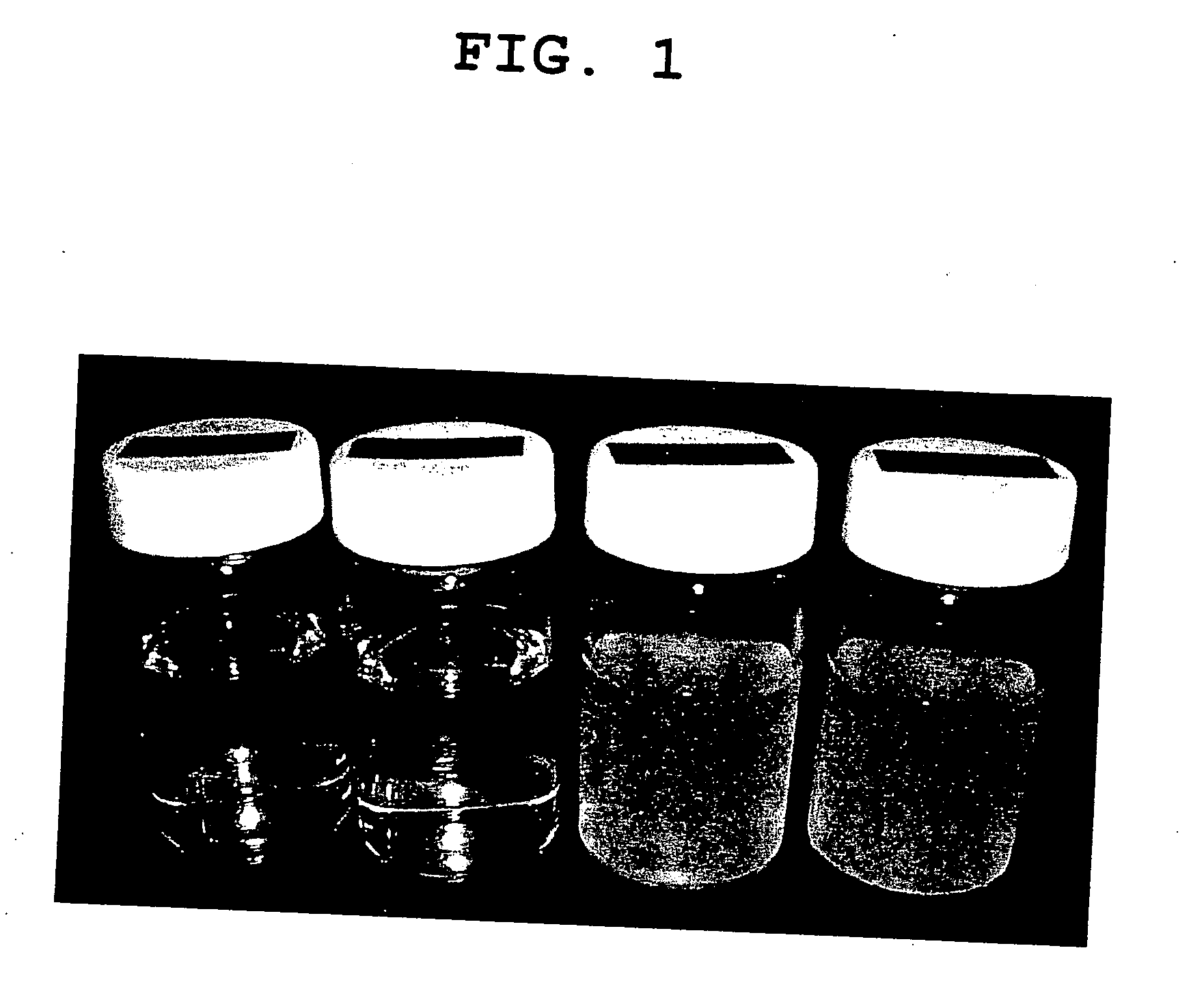Zinc pyrrolidonecarboxylate dihydrate and method of producing the same
a technology of pyrrolidonecarboxylate and dihydrate, which is applied in the direction of biocide, organic chemistry, chemistry apparatus and processes, etc., can solve the problems of difficult to obtain industrially as a zinc source zinc acetate method is not always satisfactory as an industrially convenient production method, etc., to achieve better solution properties, high optical purity, and high yield
- Summary
- Abstract
- Description
- Claims
- Application Information
AI Technical Summary
Benefits of technology
Problems solved by technology
Method used
Image
Examples
example 1
Production of Zinc Pyrrolidonecarboxylate Dihydrate from Sodium L-glutamate
[0101] (pH is 3.7 Before Separating Crystal by Nitric Acid Addition)
[0102] In an autoclave, aqueous solution of sodium L-glutamate monohydrate (61.1 g) was heated at 180° C. for two hours to obtain 50 wt % aqueous solution of sodium pyrrolidonecarboxylate. To 100.0 g (0.33 mol, pH 7.7, optical purity 84%, L / D ratio=92 / 8) of the 50 wt % aqueous solution of sodium pyrrolidonecarboxylate, 2.7 g of nitric acid (purity 60 wt %) was added to adjust to pH 5.2. The aqueous solution in which 47.6 g (0.17 mol) of zinc sulfate 7-hydrate was dissolved in 34.2 g of water was added to the aqueous sodium pyrrolidonecarboxylate solution (pH 4.1). This was stirred for 30 min at room temperature (pH 3.7) to obtain crystal, and then filtered. The obtained crystal was washed with water (21.9 g) to obtain 32.0 g (0.09 mol, yield 55%) of zinc pyrrolidonecarboxylate dihydrate. Optical purity was 99.8% (L / D ratio 99.9 / 0.1).
example 2
Producing Zinc Pyrrolidonecarboxylate Dihydrate from Sodium L-glutamate
[0103] (pH is 2.8 Before Separating Crystal by Nitric Acid Addition)
[0104] In an autoclave, aqueous solution of sodium L-glutamate monohydrate 61.1 g was heated at 180° C. for two hours to obtain 50 wt % aqueous solution of sodium pyrrolidonecarboxylate. To 100.0 g (0.33 mol, pH 7.7, optical purity 84%, L / D ratio=92 / 8) of the 50 wt % aqueous solution of sodium pyrrolidonecarboxylate, 11.5 g of nitric acid (purity 60 wt %) was added to adjust to pH 4.0. The aqueous solution in which 47.6 g (0.17 mol) of zinc sulfate 7-hydrate is dissolved in 34.2 g of water was added to the aqueous sodium pyrrolidonecarboxylate solution (pH 3.1). This was stirred for 30 min at room temperature (pH 2.8) to obtain crystal, and then filtered. The obtained crystal was washed with water (21.9 g) to obtain 25.1 g (0.07 mol, yield 43%) of zinc pyrrolidonecarboxylate dihydrate. Optical purity was 98.2% (L / D ratio 99.1 / 0.9).
example 3
Producing Zinc Pyrrolidonecarboxylate Dihydrate from Sodium L-glutamate
[0105] (pH is 3.8 Before Separating Crystal from Nitric Acid Addition, PCANa: Optical Purity 72%, L / D=86 / 14)
[0106] To 78.0 g (0.25 mol. pH 7.7, optical purity 72%, L / D ratio=86 / 14) of the 50 wt % aqueous solution of sodium pyrrolidonecarboxylate, 2.7 g of nitric acid (purity 60 wt %) was added to adjust to pH 5.2. The aqueous solution in which 47.6 g (0.17 mol) of zinc sulfate 7-hydrate is dissolved in 34.2 g of water was added to the aqueous sodium pyrrolidonecarboxylate solution (pH 4.1). This was stirred for 30 min at room temperature (pH 3.8) to obtain crystal, and then filtered. The obtained crystal was washed with water (21.9 g) to obtain 32.0 g (0.09 mol, yield 50%) of zinc pyrrolidonecarboxylate dihydrate. Optical purity was 99.8% (L / D ratio 99.9 / 0.1).
PUM
| Property | Measurement | Unit |
|---|---|---|
| optical purity | aaaaa | aaaaa |
| optical purity | aaaaa | aaaaa |
| optical purity | aaaaa | aaaaa |
Abstract
Description
Claims
Application Information
 Login to View More
Login to View More - R&D
- Intellectual Property
- Life Sciences
- Materials
- Tech Scout
- Unparalleled Data Quality
- Higher Quality Content
- 60% Fewer Hallucinations
Browse by: Latest US Patents, China's latest patents, Technical Efficacy Thesaurus, Application Domain, Technology Topic, Popular Technical Reports.
© 2025 PatSnap. All rights reserved.Legal|Privacy policy|Modern Slavery Act Transparency Statement|Sitemap|About US| Contact US: help@patsnap.com


